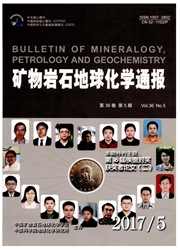

 中文摘要:
中文摘要:
白云岩成因问题一直是个未解之谜,近年提出的微生物成因模式受到了广泛关注。白云石在现代和古代冷泉环境中普遍发育,以白云石为主的冷泉白云岩主要呈烟囱状和管状产出,微观上可见菱形白云石,也有梭形和哑铃状的白云石。冷泉白云石碳同位素值变化较大,指示了可能主要来源于冷泉渗漏甲烷、海水溶解无机碳、有机质氧化和产甲烷残余的 CO2等,而氧同位素值的变化可能与甲烷水合物的生成与分解、黏土矿物的脱水和沉积温度等有关。半封闭的冷泉渗漏环境中的微生物甲烷缺氧氧化和硫酸盐还原作用可能有利于白云石的沉淀。与微生物实验相结合的冷泉白云岩研究可能是“白云岩问题”取得突破的新方向。
 英文摘要:
英文摘要:
The origin of dolomite is a long-standing problem in geology,which is the so-called “dolomite problem”. Recently,microbial dolomite mechanism attracts significant attention.Dolomite is ubiquitous in modern and ancient seep carbonates and the seep dolostone often occurs as chimney and tube.Rhombic dolomite,spindle-shaped and dumbbell dolomite are generally observed in micro scale.Their widely varied carbon isotopic values imply mixed carbon sources,including methane (biogenic methane and thermogenic methane),dissolved inorganic carbon of sea-water,organic matter of sediments and residual CO2 from methanogenesis.Variable oxygen isotopic values may re-late to formation and decomposition of gas hydrate,dehydration of clay minerals,and formation temperature.The anaerobic oxidation of methane and sulfate reduction at semi-closed seep environment might be suitable for dolomite precipitation.The research of seep dolomite coupled with bacteria-mediated laboratory study would possibly provide a hopefully direction for solving “dolomite problem”.
 同期刊论文项目
同期刊论文项目
 同项目期刊论文
同项目期刊论文
 期刊信息
期刊信息
